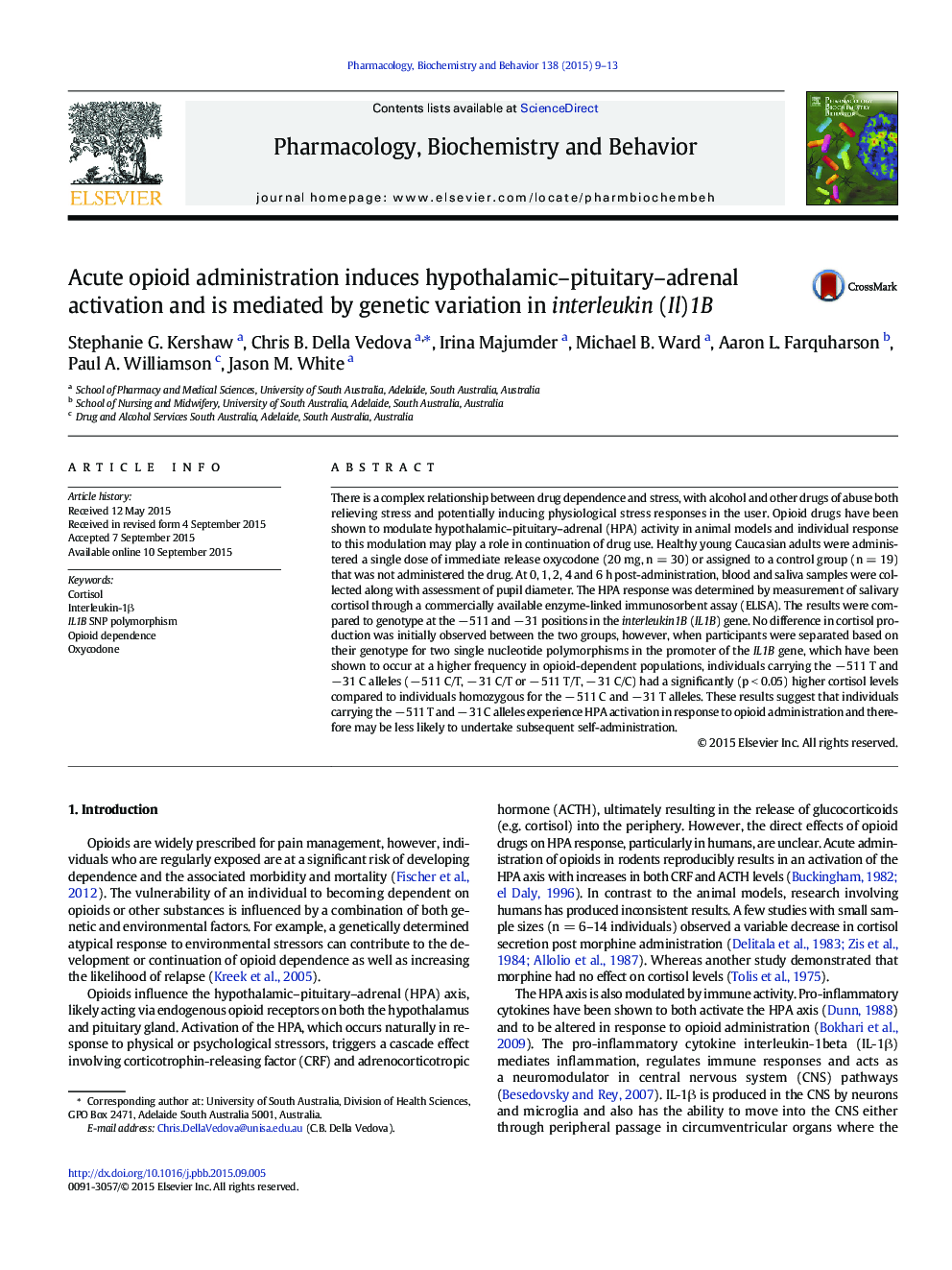| Article ID | Journal | Published Year | Pages | File Type |
|---|---|---|---|---|
| 2012708 | Pharmacology Biochemistry and Behavior | 2015 | 5 Pages |
•Initial analysis indicated that opioid administration to healthy human subjects does not induce an HPA response.•However, when subjects are separated into groups based on IL1B genotype, a differential HPA response to opioid administration is observed.•Individuals with an increased genetic risk for addiction exhibit no HPA response to opioids, those with reduced risk show a significant response.•Individuals at a reduced risk of addiction may experience a stress response to opioids and be less likely to use the drug again.
There is a complex relationship between drug dependence and stress, with alcohol and other drugs of abuse both relieving stress and potentially inducing physiological stress responses in the user. Opioid drugs have been shown to modulate hypothalamic–pituitary–adrenal (HPA) activity in animal models and individual response to this modulation may play a role in continuation of drug use. Healthy young Caucasian adults were administered a single dose of immediate release oxycodone (20 mg, n = 30) or assigned to a control group (n = 19) that was not administered the drug. At 0, 1, 2, 4 and 6 h post-administration, blood and saliva samples were collected along with assessment of pupil diameter. The HPA response was determined by measurement of salivary cortisol through a commercially available enzyme-linked immunosorbent assay (ELISA). The results were compared to genotype at the − 511 and − 31 positions in the interleukin1B (IL1B) gene. No difference in cortisol production was initially observed between the two groups, however, when participants were separated based on their genotype for two single nucleotide polymorphisms in the promoter of the IL1B gene, which have been shown to occur at a higher frequency in opioid-dependent populations, individuals carrying the − 511 T and − 31 C alleles (− 511 C/T, − 31 C/T or − 511 T/T, − 31 C/C) had a significantly (p < 0.05) higher cortisol levels compared to individuals homozygous for the − 511 C and − 31 T alleles. These results suggest that individuals carrying the − 511 T and − 31 C alleles experience HPA activation in response to opioid administration and therefore may be less likely to undertake subsequent self-administration.
